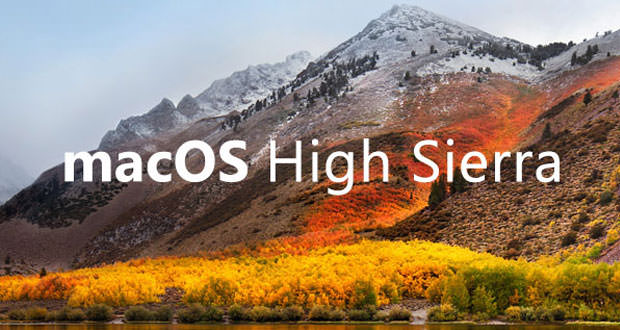Welcome to the macOS 10.13 High Sierra, the new Mac desktop and laptop operating system that offers you some amazing finishing under the hood. If you’ve been expecting great reviews, you’ll likely be disappointed at first glance, but looking closer you will discover the refined details that will match a better user experience and more power for your Mac.
Upgrading to High Sierra It is absolutely simple, takes a few minutes and almost no effort. With the upgrade guide ” How to properly update your Mac to High Sierra ” that we have prepared, you will start the new operating system in a short space of time.
Why should you upgrade to the High Sierra?
The Apple team went straight to the target, perfecting those functions and those apps that promise to be in the spotlight now as well as in the near future. With a new and optimized AFPS file system, a faster browser (which promises to be the fastest on the market), stellar graphics, the best gaming yields and the best virtual reality media, the macOS 10.13 High Sierra is definitely here to assert yourself.
News and benefits of the High Sierra update
To really give your Mac a boost, upgrading to the new High Sierra is mandatory. Just think about how much space you can save with the new operating system that compresses videos up to 40% more. High Sierra also has a photo-optimized app that offers professional editing tools that keep you glued to the screen for the perfect composition.
Obviously, the most important update is made of Metal 2, which relieves the CPU load and guarantees great performance at the GPU, while opening up the world towards VR and AR. So to conclude: the upgrade to the High Sierra ensures more space, more speed and more power.
How to prepare for the High Sierra update? Check Mac compatibility
To prepare for the High Sierra upgrade you should, of course, check if your Mac is compatible with the new macOS 10.13 High Sierra operating system. As a general rule, any more recent Mac of 2009 will theoretically be able to run it without problems.
How to prepare for the High Sierra update? Perform the cleaning of the Mac.
Next, you should perform a thorough cleaning of the Mac to make it work properly even before the update. A complete cleanup process includes deleting documents, photos and duplicate files, also removing temporary files and background caching data. You can do it manually (if you have the patience), or you can use an app like CleanMyMac3 that does all the dirty work for you.
How to prepare for the High Sierra update? Check to see if your Mac has problems.
The final stage of preparation concerns the free space needed for High Sierra. The official sources of apple. Com recommend that you have 8 GB of free space before switching to the new operating system, but we feel more comfortable reserving about 15 GB. If you do not have enough space, it means that your Mac still needs some cleaning.
How to prepare for the High Sierra update? Check that the Mac has enough free space.
Backing up your Mac before an upgrade is important, especially so as not to risk losing valuable information, so there’s no excuse to skip this step. You can easily back up your Mac using Apple software, Time Machine, which saves a copy of the entire Mac with hourly, daily, monthly and weekly backups.
In addition, with the exception of automatic backups, you can also customize the process and backup documents manually from System Preferences. An external storage device is required to use Time Machine. How big? The bigger the better. Choose your favorite among USB, SDD, NAS drive or Thunderbolt hard drive.
Tips to clean up your Mac to get more free storage Backup before upgrading to MacOS 10.13 High Sierra.
Once you’ve prepared your Mac for the upgrade, it’s time to start the upgrade process. Choose a secure and reliable network for the upgrade. In fact, all the main updates must be performed by a reliable network, in order to have speed and security for downloading and installation.
The best place to upgrade is your home with the convenience of home networking, and you should avoid WIFI connections and in particular, those of hotels, restaurants or public networks.

